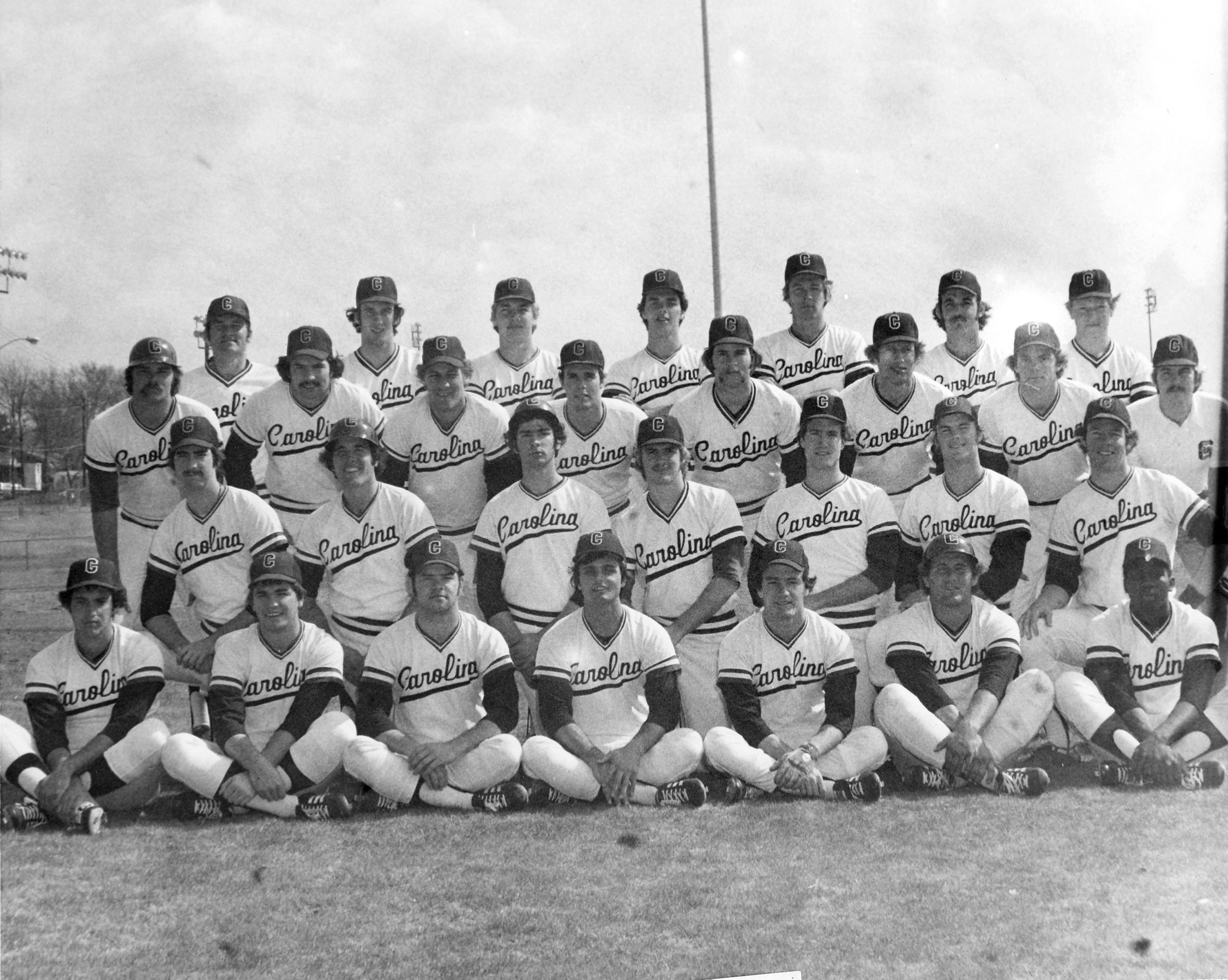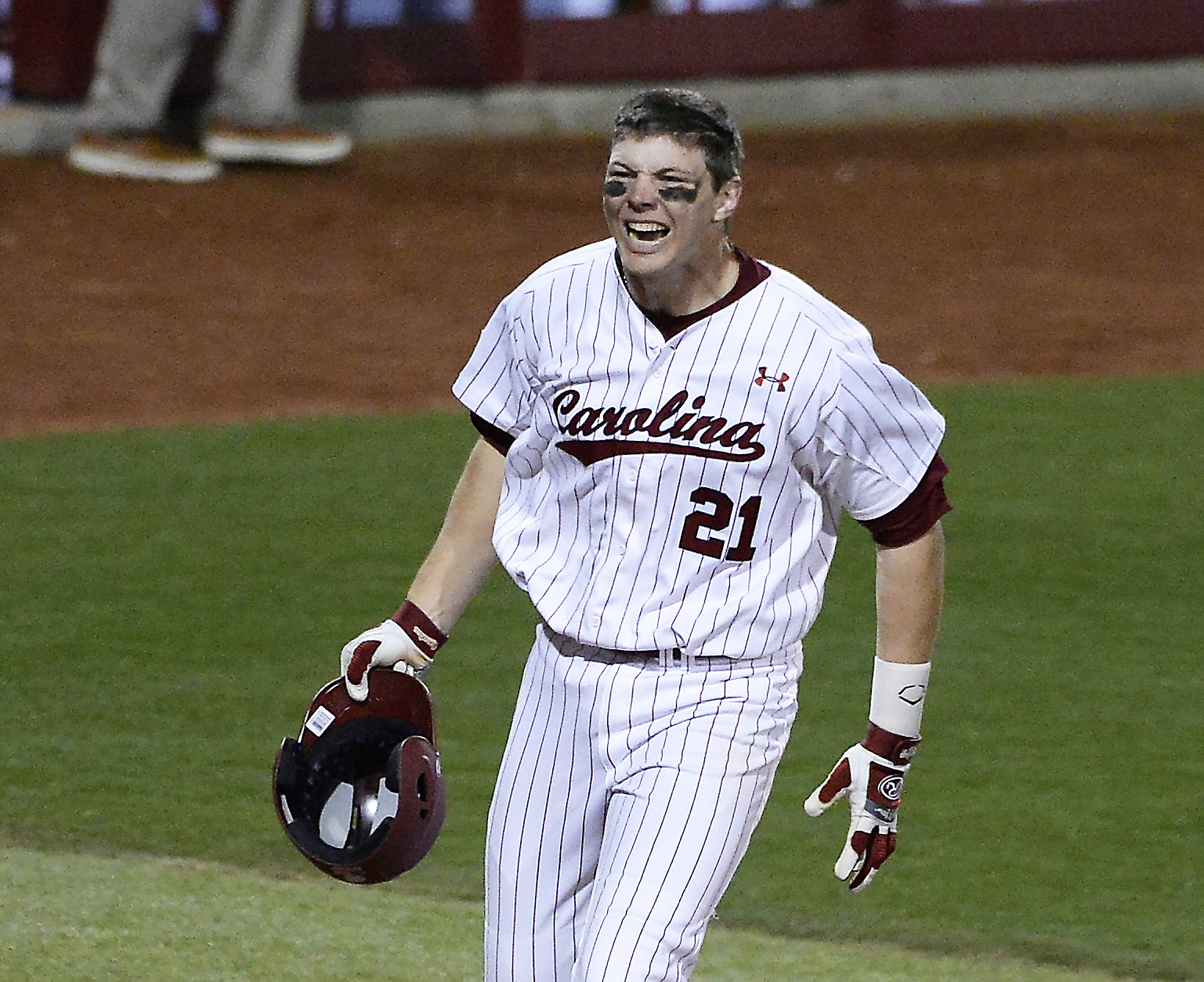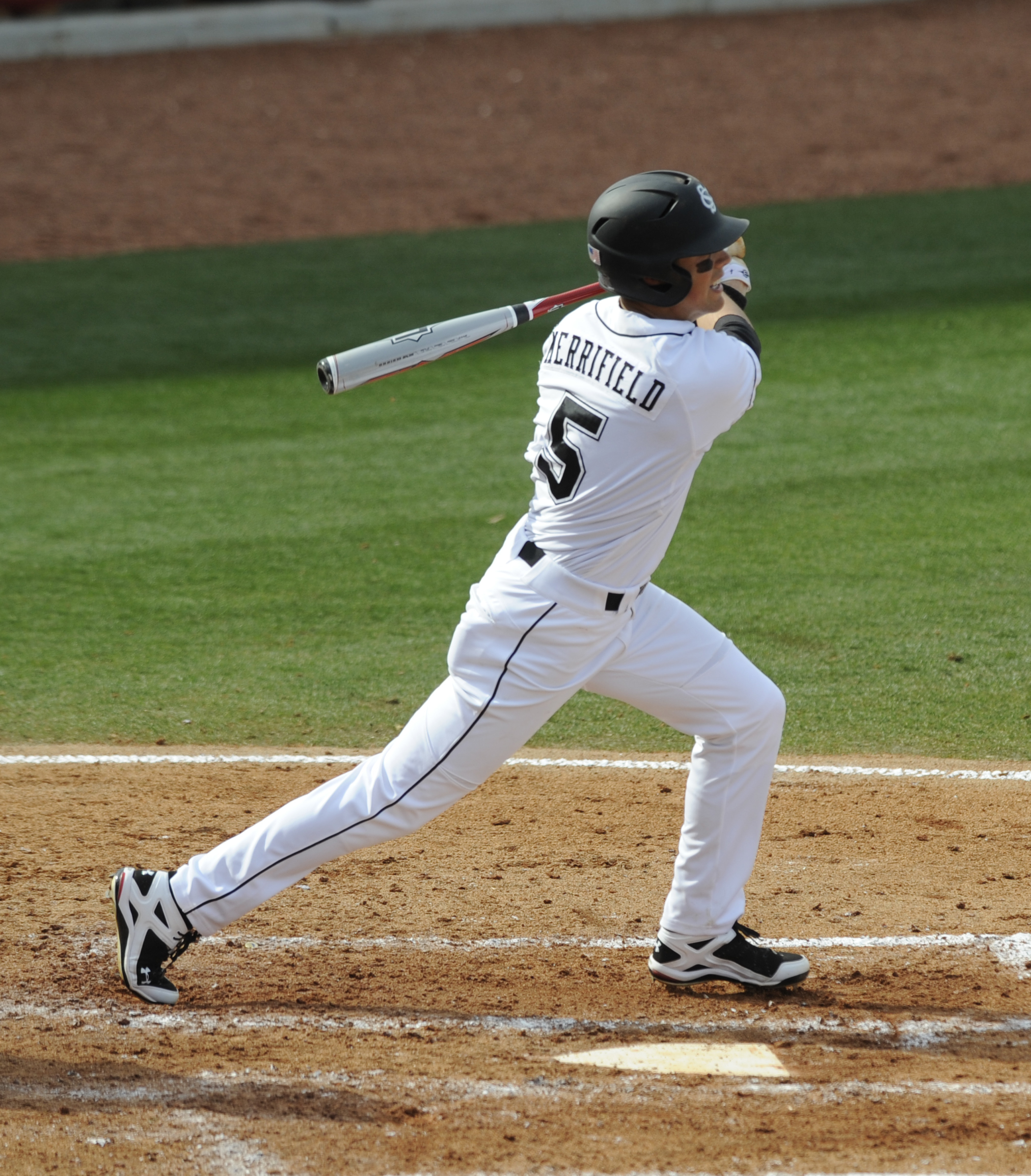Columbia is just about the quietest hub of Major League Baseball talent in the country. The Capital City and surrounding Richland and Lexington counties have produced more than 25 big leaguers, both past and present. Pound for pound, the Midlands must have one of the best all-time all-star teams of any city in the country.
I’ve selected a team I call “Columbia’s Starting Nine,” a dream baseball all-star team to represent the city. I’ve taken the liberty of also adding a relief pitcher. Another 55 former South Carolina Gamecocks have made their way to the major leagues, but for the sake of this article, I’m only selecting players who were born, raised, or reside in Columbia and its immediate environs. A team filled with players from the University of South Carolina merits its own list and would include the likes of 2018 American League Championship Series MVP Jackie Bradley, Jr.; 2018 World Series MVP Steve Pearce; and former Phillies All-Star third baseman Dave Hollins. Even without the non-Columbian Gamecocks, Columbia’s Starting Nine includes a fistful of All-Stars, World Series heroes, a Cy Young Award winner, and a Negro Leagues legend.
 Mookie Wilson, first row, far right. Photography courtesy of South Carolina Athletics
Mookie Wilson, first row, far right. Photography courtesy of South Carolina Athletics
William Hayward “Mookie” Wilson is best known for his role in one of the most famous moments in baseball history: Game 6 of the 1986 World Series. Mets centerfielder Wilson hit the bounding ground ball that went through Red Sox first baseman Bill Buckner’s legs in the bottom of the 10th inning, winning the game for the Mets and costing Boston the chance to close out the series. The switch-hitting Wilson earned a World Series ring with the eventual world champion Mets, his home for 10 of his 12 big league seasons.
Wilson’s journey began in the small town of Bamberg, where he played baseball at Bamberg-Ehrhardt High for the legendary David Horton, one of the coaches with the most wins all-time in Palmetto State history. “Mookie,” as he was nicknamed by his family, went on to star at USC during the coaching tenure of former Yankees great and Sumter native Bobby Richardson. Despite his slight stature, Wilson moved quickly through the New York Mets organization, debuting in the big leagues in September 1980. “Mookie” became a stalwart in the Mets’ lineup throughout the 1980s – a timely hitter, excellent defensive outfielder, and a speed demon on the basepaths. Wilson finished in the top 10 in NL stolen bases on four occasions and is the Mets’ all-time leading base stealer. “Mookie” has long made his home in Columbia and serves as a minister at the Zion Mill Creek Baptist Church.
 Grayson Greiner
Grayson Greiner
Born in Columbia and raised in Blythewood, Grayson Greiner was a hard-nosed signal caller on Ray Tanner’s last and Chad Holbrook’s earliest USC clubs (2012-2014). The clutch-hitting catcher anchored teams that earned two bids to the NCAA Super Regionals and made three NCAA tournaments. Greiner has platooned behind the plate the last three seasons for the Detroit Tigers and is quickly earning a reputation as one of the American League’s best defensive catchers.
Jerry Martin starred in both basketball and baseball at Columbia’s Olympia High School before leading the Furman Paladins to Southern Conference championships in both sports in 1971. Martin played 11 MLB seasons, hunkering down around the outfield and at first base for five different clubs. He enjoyed his best seasons with the Chicago Cubs, belting 19 home runs in 1979 and a career-high 23 in 1980. Martin coached in the Phillies and Tigers organizations for years following his retirement in 1984. Jerry’s father, Barney Martin, is another one of Columbia’s big-league boys of summer. Barney “had a cup of coffee” with the Cincinnati Reds in 1953.
 Whit Merrifield
Whit Merrifield
Raised in Davie County, North Carolina, Merrifield starred at USC (2008-2010), becoming one of the best hitters in school history. He posted a .329 career batting average for the Gamecocks. Merrifield, who continued to reside in Columbia after his tenure at USC, is responsible for one of the greatest moments in South Carolina sports history. He hit a game-ending RBI single in the 11th inning of the 2010 College World Series championship game. This gave USC its first baseball national title. After a six-season minor league odyssey, Merrifield became an almost immediate success with the Kansas City Royals, becoming the club’s regular second baseman in 2017. Merrifield soon asserted himself as one of baseball’s best offensive second basemen. In 2018 and 2019, he led the AL in hits. He has also led the AL in stolen bases twice (2017, 2018) and led the AL in triples in 2019. Merrifield earned his first All-Star Game selection in 2019.
Raised in Columbia’s South End, Calvin “Pokey” Reese was one of the best defensive infielders of his generation. He turned heads at Lower Richland High School, gaining the attention of dozens of MLB scouts. The Cincinnati Reds made Reese its first-round pick in 1991. The Reds’ investment in Reese certainly paid off. Though never a fearsome hitter, Reese flashed the leather at second base and shortstop like few others. In 1999 and 2000, Reese won consecutive Gold Gloves at second base. On three occasions, he finished in the top 10 in the NL in stolen bases. Reese finished his career in style as the starting shortstop for the 2004 Boston Red Sox. He earned a World Series ring with the curse-breaking Red Sox, who won its first championship in 86 years.
James Buster “Buzz” Clarkson played in just 14 MLB games. By the time the 37-year-old Hopkins native debuted for the Boston Braves, he had played more than two decades of professional baseball. Clarkson held down the third base position, the “hot corner,” for the legendary Pittsburgh Crawfords of the Negro Leagues during the late 1930s. Service in World War II interrupted Clarkson’s career, but he found his way onto some of the Negro Leagues’ most legendary clubs, including the Newark Eagles and Philadelphia Stars.
Over the course of his career in the Negro Leagues, Clarkson played alongside such Hall of Famers as Satchel Paige, Oscar Charleston, Ray Dandridge, Monte Irvin, and Larry Doby. During the 1940s and 1950s, Clarkson played in Puerto Rico for the Santurce Crabbers, helping lead the club to several Caribbean Series championships. Among his teammates for Santurce were Willie Mays and Roberto Clemente, both of whom were still teenagers at the time. Clarkson lived in Pennsylvania following his retirement from baseball and died in 1989.
West Columbia’s own Hal Jeffcoat had one of the most remarkable careers in MLB history. Born in 1924, the Brookland-Cayce High School graduate served as a paratrooper with the 101st Airborne Division in Italy during World War II and earned a Purple Heart for a wound he received during one of his 13 jumps into enemy territory. Jeffcoat had excelled as both a pitcher and an outfielder in high school and signed on with the Double-A Nashville Volunteers after the war. He impressed so much with his arm and his bat that the Chicago Cubs signed him in 1948 and placed him on its opening day roster. Chicago found a place for Jeffcoat in its outfield. He batted an impressive .279 in his first year and was immediately noted for his hustle in the outfield, earning him a spot on the Sporting News‘ All-Rookie team that year.
A series of injuries brought on by his self-sacrificing play in the outfield cut not only into his playing time but also his performance. On the verge of losing his place on the Cubs’ roster, Jeffcoat converted back into a pitcher, which revitalized his career. Making use of a variety of off-speed pitches, notably his curveball and screwball, Jeffcoat extended his MLB career by another six seasons. He became a reliable reliever for the Cubs and later a starting pitcher for the Cincinnati Reds. Following his playing career, Jeffcoat relocated to Tampa, where he died in 2007.
Chapin’s DeWayne Wise boasted an 11-season MLB career that began in Toronto and ended in Chicago. Between 2000 and 2013, Wise played outfield for six franchises and made a total of nine stops around the big leagues. He enjoyed his best season in 2012 with the Yankees and White Sox, hitting .259 with eight home runs and 30 RBIs. Wise was an excellent defensive outfielder who is best known in Chicago for making “the catch,” preserving White Sox pitcher Mark Buehrle’s 2009 perfect game by robbing Tampa Bay’s Gabe Kapler of a home run in the bottom of the ninth inning.
Hoyt is arguably the most decorated player to hail from Columbia. The New York Yankees drafted Hoyt out of Keenan High School in 1973 and traded him to the Chicago White Sox after four years, still having yet to reach the major leagues. Hoyt finally made it to the show late in the 1979 season. Over the next two seasons, the robust right-hander became one of the AL’s best pitchers, bouncing between the bullpen and Chicago’s starting rotation. Hoyt, who threw sidearm, displayed excellent control and great movement on his pitches. In 1980 and 1981, he posted consecutive 9-3 campaigns and finished in the top 10 in saves in ’81. In 1982, Hoyt became a full-time starter for Tony LaRussa’s rapidly improving club. Hoyt responded by leading the AL in wins with 19. The next year, Hoyt again led the AL in wins with 24 and guided the Chicago White Sox to the AL West crown, its first post-season appearance in nearly a quarter century.
Hoyt’s accomplishments on the mound won him the AL’s 1983 Cy Young Award. Following a subpar 1984 season, the White Sox traded him to the San Diego Padres in a seven-player deal. Hoyt rebounded in 1985, posting a 16-8 record and earning his only selection to the All-Star Game. He made the most of the opportunity, surrendering just one run in three innings of work. Hoyt got the win for the NL and was named the game’s MVP. Following the 1985 season, Hoyt’s career collapsed due to a series of arm injuries and drug-related, off-the-field problems. The year 1986 proved to be the final season of Hoyt’s remarkable, though sadly abbreviated, big league career.
Born in Columbia and raised in Spartanburg, Bill Landrum was the son of a major leaguer. His father, Joe, played briefly for the Brooklyn Dodgers in 1950 and 1952. Bill starred at Spring Valley High School and the University of South Carolina before signing with the Chicago Cubs in 1980. During the late ’80s and early ’90s, Landrum was regarded by his peers as one of the NL’s most dependable relievers, pitching for four different clubs on the senior circuit. Landrum enjoyed a career year in 1989 with the Pirates, earning 26 saves (good for sixth in the NL) and an impeccable 1.67 ERA. Two years later, Landrum posted 17 saves for the NL East champion Pirates and finished seventh in saves in the NL. After his retirement, Landrum continued to reside in the Columbia area.
Clayton Trutor holds a Ph.D. in U.S. history from Boston College and teaches at Norwich University in Northfield, Vermont. He is the author of Loserville: How Professional Sports Remade Atlanta and Atlanta Remade Professional Sports.










